|
|
Post by Lee Martin on Aug 23, 2013 8:54:45 GMT -5
Loan of experimental .357 Maximum SRM-4 in 1981. 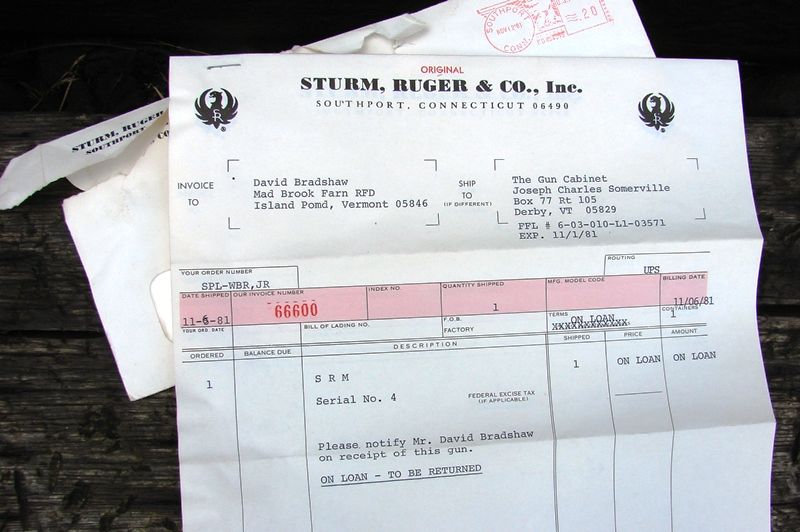 Maximum 600-00018 with 2nd & 3rd barrels and extra cylinder. 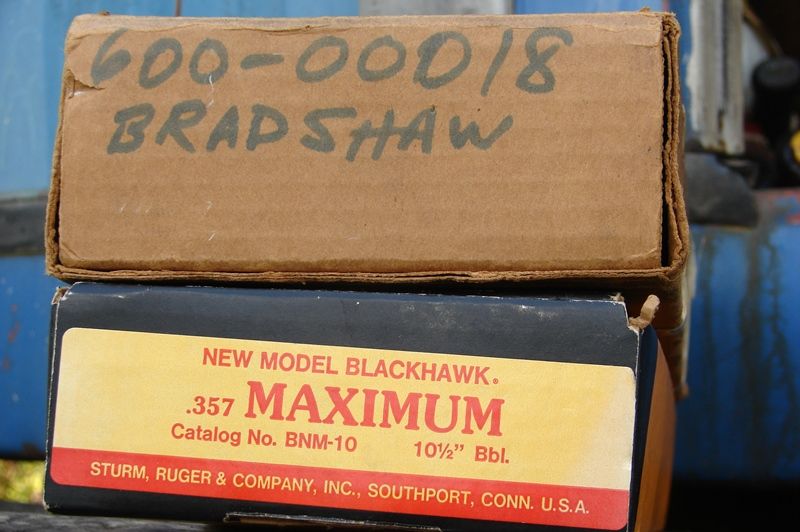 Boxes for first production .357 Maximum. 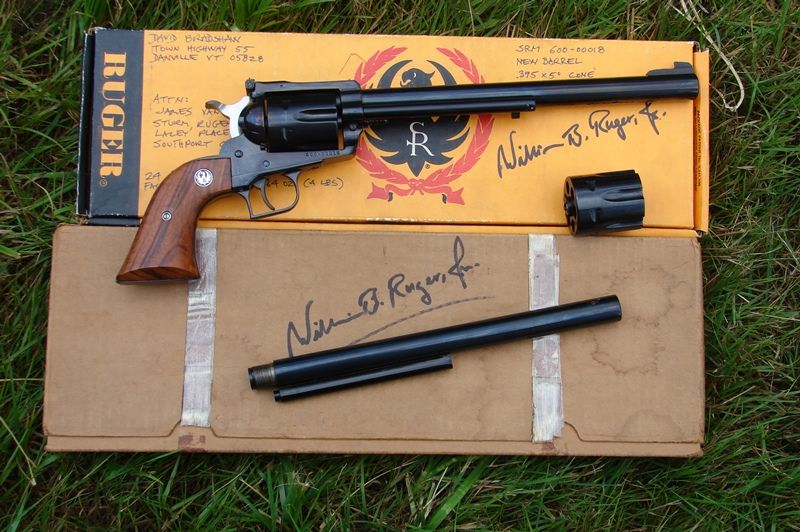 5-degree & 11-degree forcing cones (included angle).  Les Baer 1911Super Tac in Bradshaw leather. 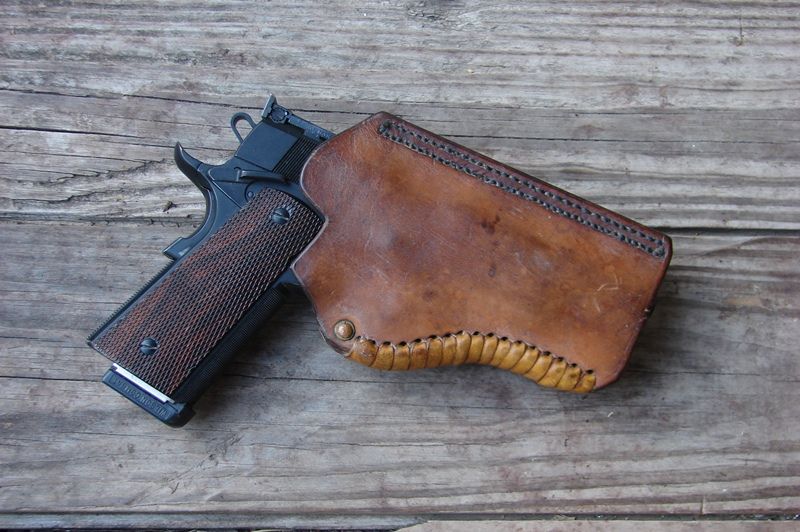 Belt loop staged for 1-3/4" garrison belt and 2-1/4"" belt. 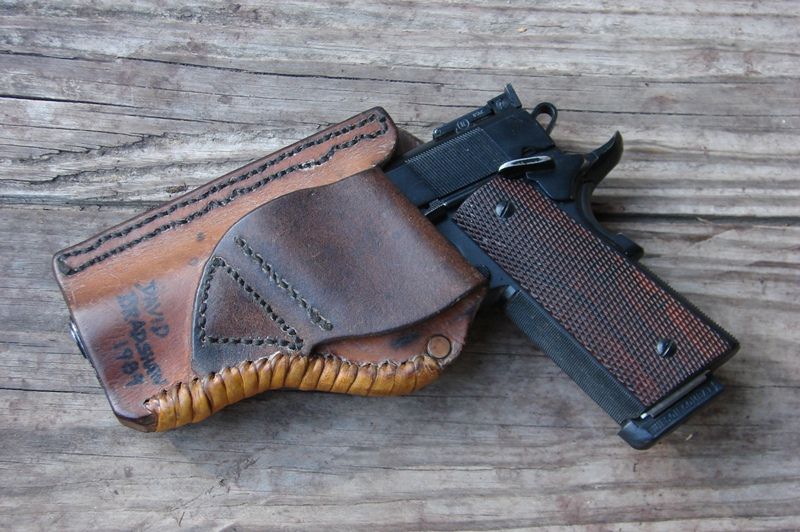 Sight track virtually eliminates wear of front sight  -Lee www.singleactions.com"Building carpal tunnel one round at a time" |
|
|
|
Post by jayhawker on Aug 23, 2013 19:49:06 GMT -5
Mr Bradshaw, I like the holster, great design, should last a lifetime.
|
|
|
|
Post by bradshaw on Jul 23, 2019 13:45:01 GMT -5
jayhawker.... thank you, six years later, for the kind words.
squigz, on holster making.... the Les Baer 1911 Super Tac in holster angled for strong side or crossdraw----depending on activity, I wear both ways. Front with leather sight track was glued, drilled by hand, stitched with extremely strong, not-nylon, thread with needles on both ends. Thread continuously rubbed with beeswax. Holster water molded before lacing with elk hide. The sight track permits target blade front sight, such as found on pre-Gold Cup Colt National Match (Les Baer Super Tac has a steep ramp front sight).
Water molding is critical to working stiff, high quality leather, both to conform to handgun and to create a strong shape that doesn’t flatten. In recent years I switched from animal oils to a hot mixture of clear mineral oil & beeswax----much more resistant to mildew in hot, humid environs. Retention starts with design and hand-working. Gun is greased & wrapped in cellophane for final setup, 2/3 drying time with gun in holster.
Belt loop has an inside track to accommodate various width belts.
David Bradshaw
|
|
|
|
Post by squigz on Jul 23, 2019 13:59:51 GMT -5
jayhawker.... thank you, six years later, for the kind words. squigz, on holster making.... the Les Baer 1911 Super Tac in holster angled for strong side or crossdraw----depending on activity, I wear both ways. Front with leather sight track was glued, drilled by hand, stitched with extremely strong, not-nylon, thread with needles on both ends. Thread continuously rubbed with beeswax. Holster water molded before lacing with elk hide. The sight track permits target blade front sight, such as found on pre-Gold Cup Colt National Match (Les Baer Super Tac has a steep ramp front sight). Water molding is critical to working stiff, high quality leather, both to conform to handgun and to create a strong shape that doesn’t flatten. In recent years I switched from animal oils to a hot mixture of clear mineral oil & beeswax----much more resistant to mildew in hot, humid environs. Retention starts with design and hand-working. Gun is greased & wrapped in cellophane for final setup, 2/3 drying time with gun in holster. Belt loop has an inside track to accommodate various width belts. David Bradshaw Thanks David! I didn't even think about drilling the thicker sections, everything I have is glued together as well. My threading is also a non-nylon thread but is pre-waxed. I didn't get into the water molding or anything, not sure or totally comfortable with doing that at the moment. I really like the elk hide bottom trap that's set up, I might have to take a look into doing something similar myself. I had seen similar designed holsters that had a sight track/tripled leather on top to help with the first sights not getting caught up, so I just followed the idea that I had, which is similar to what you created as well. |
|
|
|
Post by bradshaw on Jul 23, 2019 19:13:06 GMT -5
squigz.... too punch holes by hand through thick stiff leather, I prefer to drill, with the hide on a wood block. A drill press is better, buy a hand held drill will do. Thread with needles on both ends, to counter-loop. The needle should fit firm in the drilled hole. An awl is cannibalistic, you got to be a gorilla to muscle it through and the strain on the thread is harsh. Beeswax is your friend, inert, protects thread and leather. Good thread you can draw tight in water-soaked leather. There is no point in forming and stitching a holster in dry leather. Provided it is good hide honestly tanned, water molding holds its shape, making the rig stronger.
A holster should be mocked up in cardboard or heavy paper, wrapped around the gun. Whether the belt loop is one with the holster body or separate, it should be configured before leather is cut. Allow for trim. In general. the less leather in the final product, it better it feels in high mileage endeavors.
David Bradshaw
|
|
|
|
Post by squigz on Jul 24, 2019 7:53:17 GMT -5
David, I'll have to look up the water soaking method you mention and see what can be done with that. I didn't awl everything from the beginning, I have a set of punches that I used in conjunction with a hammer and piece of wood to make the holes that were then finished and rounded off with the awl.
I didn't even think of using cardboard! I actually went to the crafts store and bought 2mm felt and used sewing needles to hold it in place as I retrieved the rough measurements; from there I measured twice and cut large enough that I would be trimming roughtly 1/2" off the threads so that I always had enough room to work with and more than enough leather.
|
|
|
|
Post by bradshaw on Nov 29, 2021 11:23:57 GMT -5
Bob Wright.... regarding your thread today: New Holster under Single Actions.... reviving photo essay Vol. 17 (XVII) to show the way I made belt loop to position firmly with either of two belt widths. With this raked M1911 holster, the STAGED LOOP (or flap) inside the loop secures the standard 1-3/4”-wide garrison belt flap sewed inside the loop; primarily for a belt worn in the waist loops of the pants. The main loop accommodates broader width belt for hip carry. Note: the bottom of the holster loop is sew wide to prevent rocking.
Placement of belt loop on holster relates directly to rigidity of revolver or pistol, and whether gun butt juts outward or inclines inward to body. Both butt positions have attributes specific to use.
I don’t know origin of the staged loop. I first ran into what I call the staged loop at Strong Leather, which was then owned by S&W----under Bangor Punta. I submitted two holster designs to S&W, which entered production as the models 27 and 28; neither of which employed a staged loop.
The staged loop is a streamlined, minimal leather, means to properly carry via a couple of belt widths. Whether a consequence ignorance or fashion, abandonment of wide belts can be injurious to anatomy when the bely must hold more than pants, or pants are laden with weighty objects. The 1-1/2” belt has replaced the healthier, more practical 1-3/4” garrison belt.
As a footnote, I prefer a solid brass buckle to plated brass or worse, plated steel.
David Bradshaw
|
|